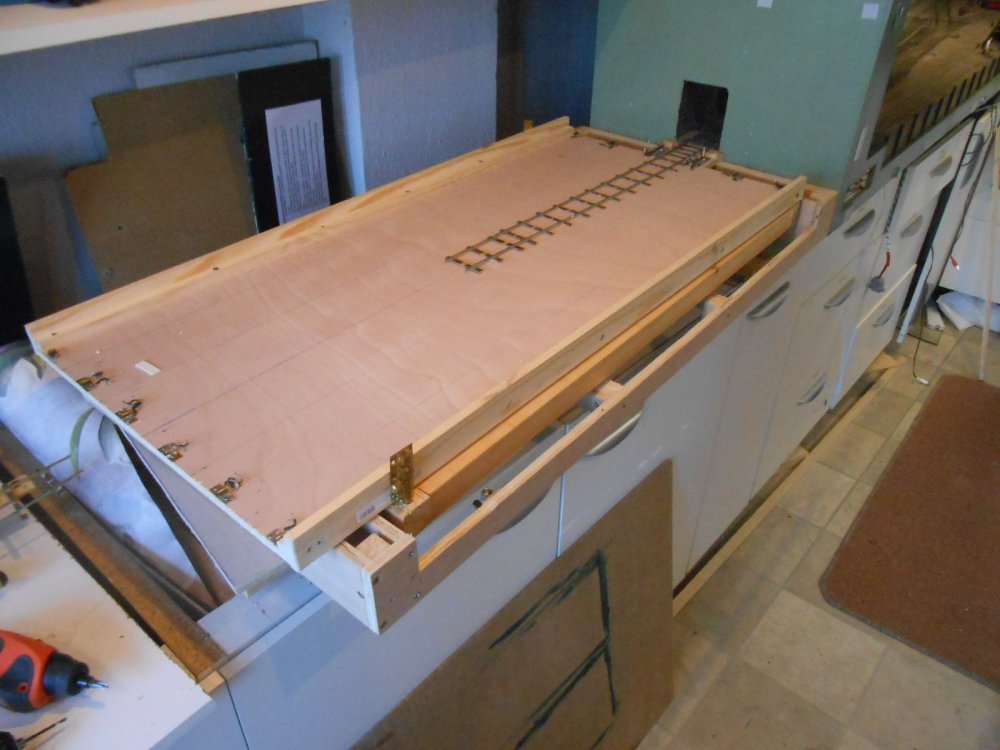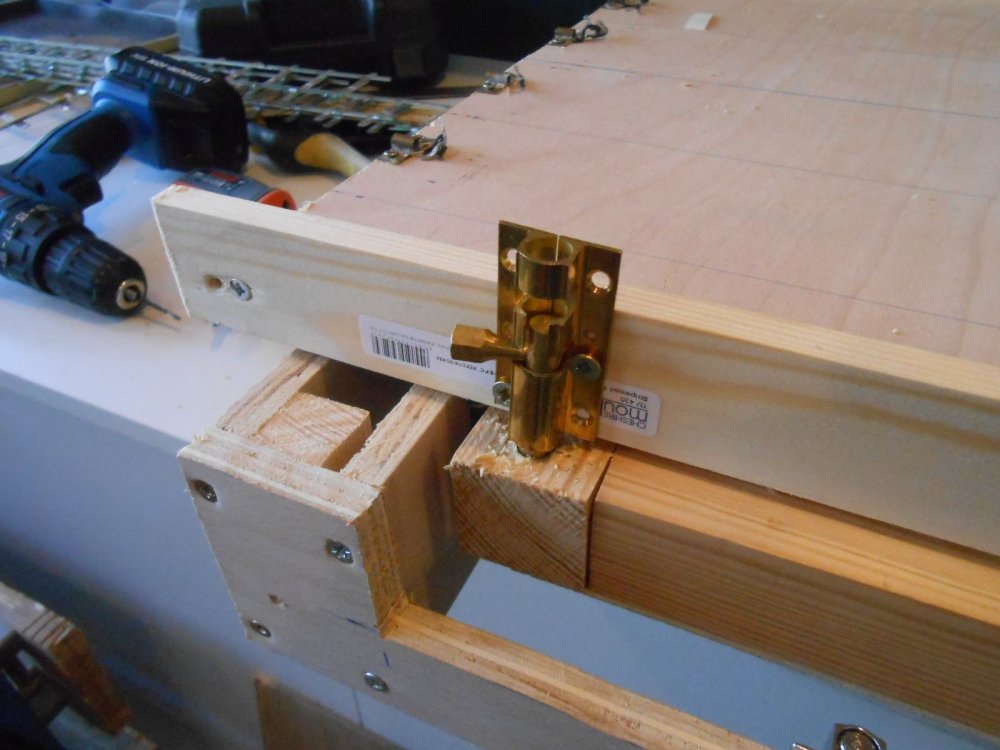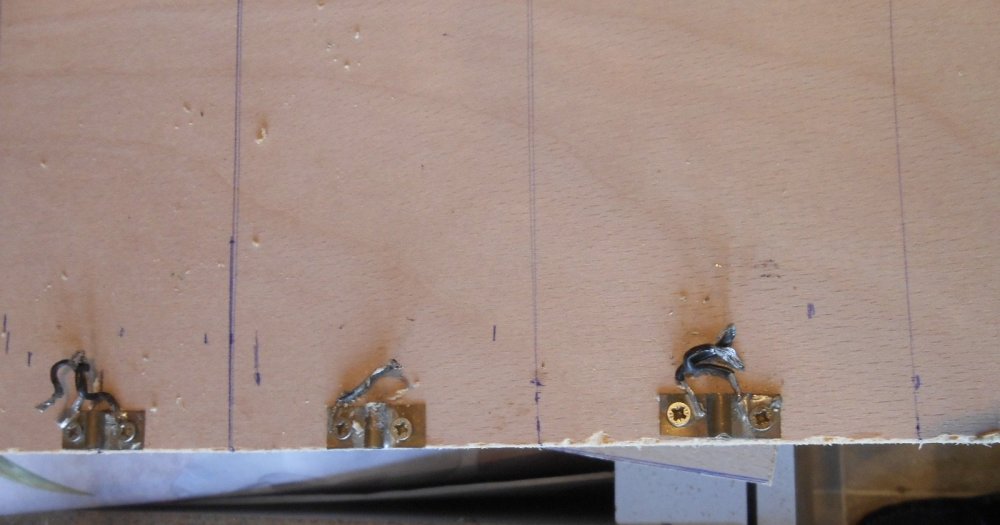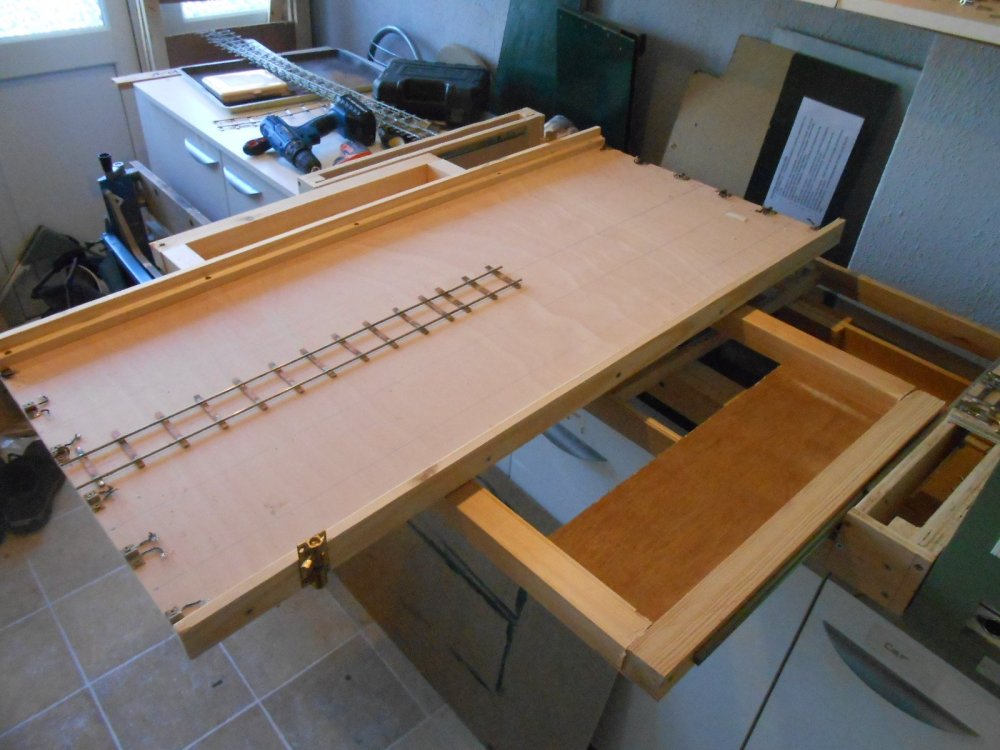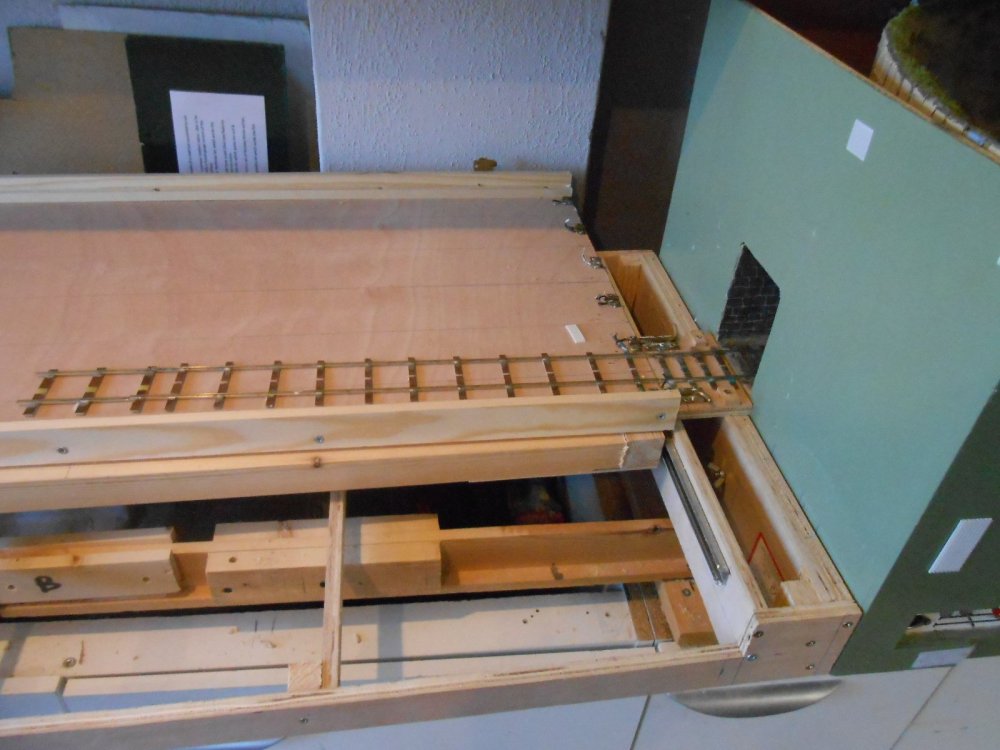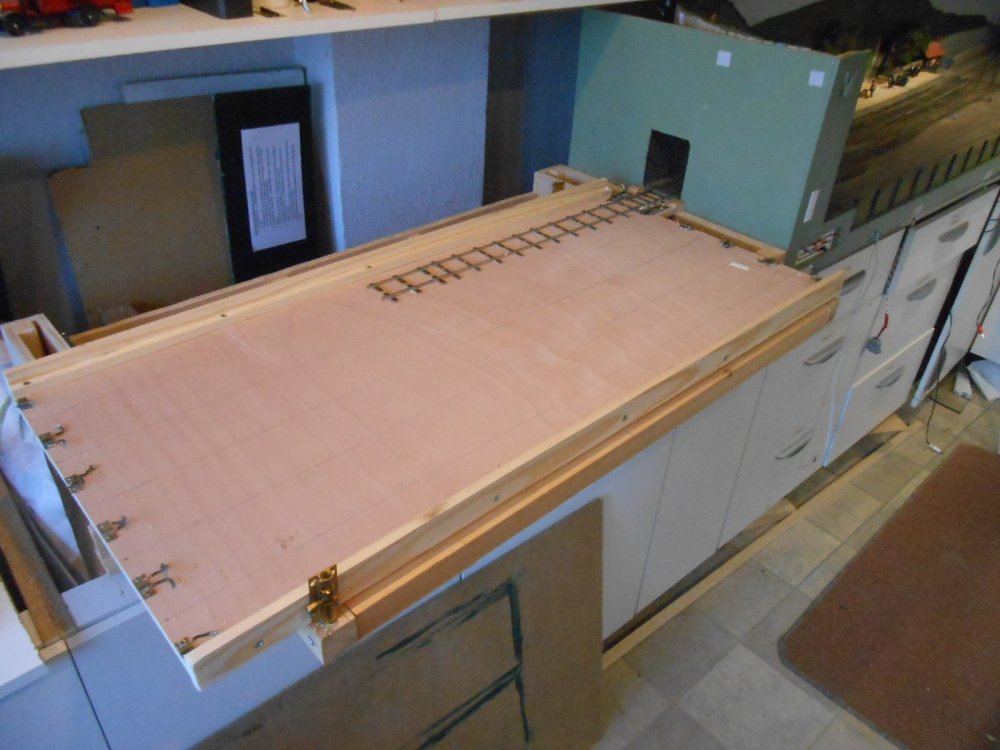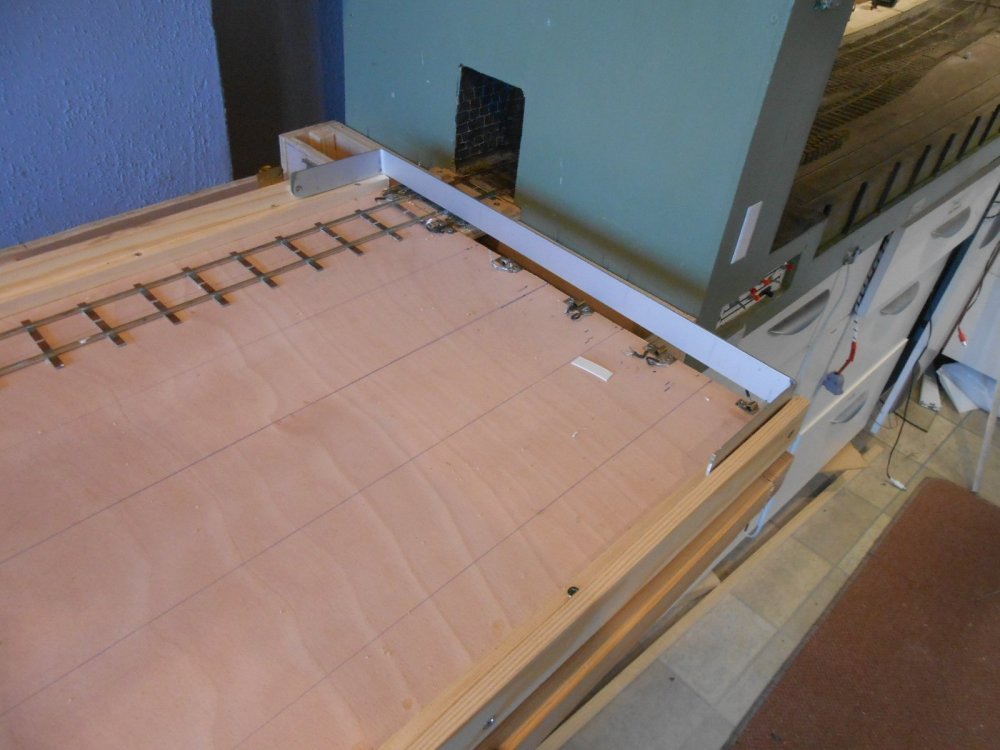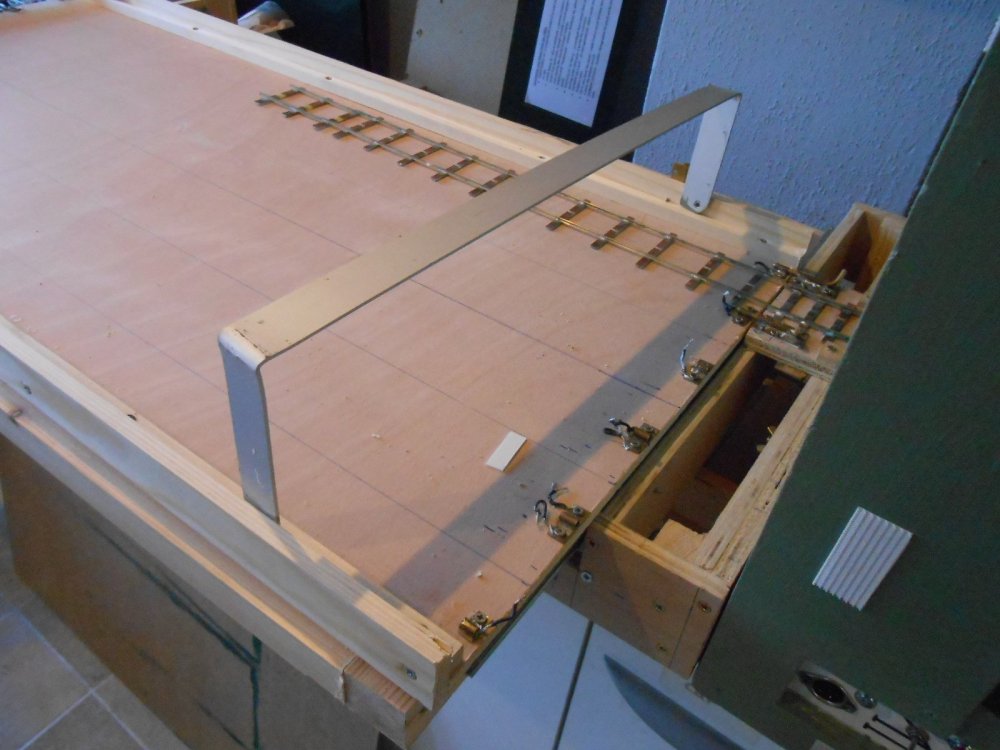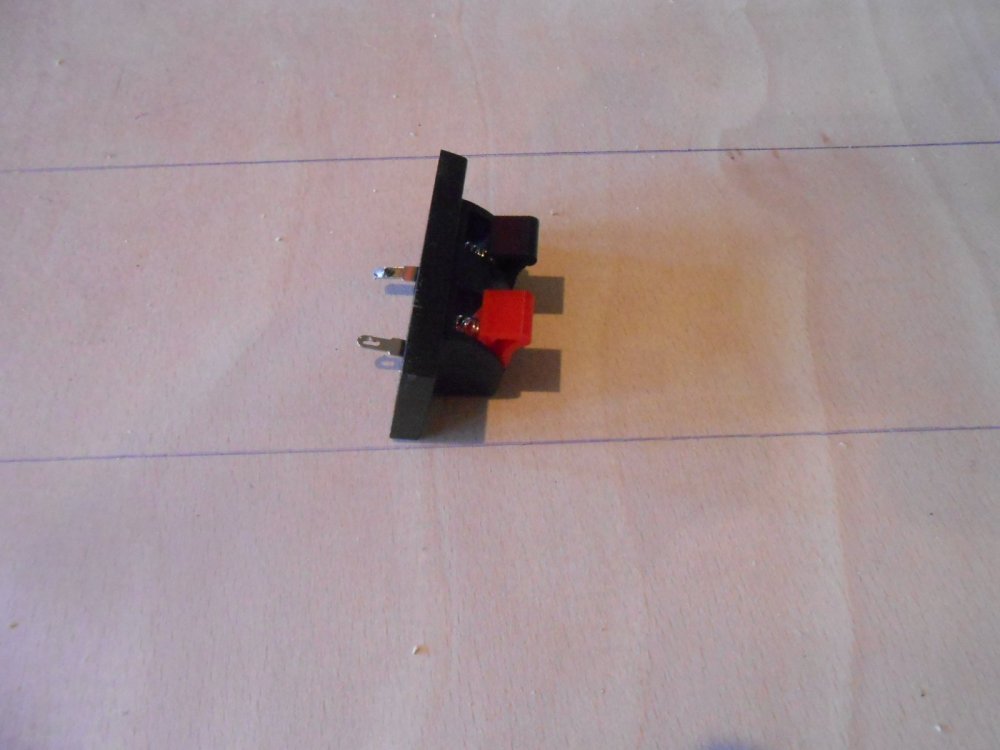
David Holman
Members-
Posts
3,721 -
Joined
-
Last visited
-
Days Won
100
Content Type
Profiles
Forums
Resource Library
Events
Gallery
Blogs
Store
Community Map
Everything posted by David Holman
-
Still need nearly twelve feet to model that...
-
12 years and over 450,000 views! Quite a ride, Patrick. Hope the moves go well and that it won't be too long before you start posting about a new project
-
Nice! Believe there is one due out in 7mm scale, so will be very interested to see if the wheels can be moved out to broad gauge.
-
Necessary evils, both!
-
New Sliding & Rotating Fiddle Yard Having been repeatedly stymied by having to send off for materials on current projects have finally managed to get on with something for a change, though even here, it was not without its problems! The original Arigna Town fiddle yard has earned its keep over the years. Based on a design by the late Robin Fielding back in MRJ 199, it proved ideal in meaning entire trains could be turned without the need for any handling - a real boon at exhibitions and still a talking point too. The only downside was that it was very heavy. I cut it down quite a bit to use with Northport Quay, making it both shorter and narrower, but it still weighed too much. I also wanted a fiddle yard that would work with Fintonagh in its Swilly/Donegal reimagining, so a brand new version was the only answer. There are three main parts to a fiddle yard like this: the frame, the sliding table and then the rotating track table. I made the frame from 12mm plywood. The ends are 90mm deep and 500mm wide. The sides are a long U shape [1000mm], with the cut away section accommodating the sliding table. The latter sits on two way drawer runners, which are screwed to more 12mm ply. Just like last time, I somehow got one way runners at first, which don't work at all and had to send off for replacements. Note to self - read the Amazon description more carefully in future! Everything needs to be as square as possible, so I used 25mm square softwood to reinforce the corners, with a couple of cross braces and everything screwed and glued together. The sliding table bit was built in situ. I fixed the drawer runners to two pieces of 31mm square softwood, which form the ends of the table and then fixed these to each inner ends of the main frame. Two longer pieces of 31mm wood were cut to make the sides and these were aligned and held in place with rectangles of 3mm ply across the underside of each end. Like the main frame, the sliding table is completely open, to save weight, though it also has a couple of cross braces on which sits a Lazy Susan [10cm cake turntable]. The height of this needed to be measured very carefully, so that, once fitted, the track table would exactly match up with the track leading from the layout. On the original model, the track table was a pieces of 12mm MDF - again, very heavy. This time I've used 9mm plywood, braced with 12mm and 40 x 12mm softwood along each edge. Several additional items are needed: A piece of 12mm plywood forms the link to the layout. This has a piece of 36.75mm track on it, together with two home made bolts [brass rod, tube and plate] which both align with each of the five tracks on the table and carry power from the layout itself. A separate piece of 12mm ply will used to carry the two 21mm gauge tracks from Fintonagh. These are on a different alignment so the two must be interchangeable. The alignment sections for the bolts on the track table are similarly home made. When the track is fitted, Code 83 rails [21mm gauge] will be soldered in between the broad gauge, Code 100 rails, thereby enabling the new fiddle yard to work with both layouts. A spring connector will be fitted underneath the main frame to take the two track wires from the main layout. All fiddle yard tracks are isolated, unless connected via the alignment bolts A hinged barrier [aluminium strip] will be fitted each end to stop stock running off the ends A small bolt underneath is used to secure the sliding table for transport Two further small bolts [currently oversize in the pictures] are used to lock the track table in place when it is in sliding mode. Sliding the table from side to side enables all trains to enter/exit the layout. When they have all returned, the bolts are undone and the train table is pulled out beyond the entry track and then turned so that everything is ready to go out again. Hopefully, the pictures below will help make sense of the above. There is a fair bit of finishing off to do, not least laying the track, but it all works very smoothly and weighs far less than the original version, which has to be a very good thing. Though quite complicated to make, to me, this is by far the best type of fiddle yard I've used and this includes points, cassettes and full turntables.
-
Indeed! Have even found putting the offending article on a shelf/back in its box for a while only to return to it a few days later to find all is not as bad as it seems. In the meantime, do something nicer, as per this morning when I visited a local wild flower meadow to be in awe of thousands of wild orchids. Rule Number 1 - always stop while you are winning Rule Number 2 - NEVER think you can just do one more thing - it will always bite you later
-
Hand built track shouldn't be a problem, but, from my experience it certainly can be. Experts can argue that using gauges properly minimises the variables - and I guess it should, but somehow there always seems to be a lot of fettling required. I put it down to the fact that I only build track every few years and it means I just lose the knack - that's my excuse, anyway! Stock building occurs more regularly, so less of a problem - though the saga of my Barclay 4-6-0T rumbles on. Basically, anything that moves (and include electrics in that), will try to bite you! Life is complicated, which is why it is fun. Most of the time, anyway.
-
How do the uncouplers work? Presume they are tiny rare earth magnets, but are they just manual, as per three links? Am guessing the video tells all, but the site says it can't be found.
-
Sometimes, it can be nice to take time out and indulge in your creations - especially when they are as fine as this. Love the subtle co!ours.
-
The Ellis Clarke 7mm scale one is getting positive reviews - a bag of sand should get you one if you have the means...
-
As ever, well worth the wait!
-
In some ateas, freight is more important than passenger traffic, so a passing loop that allowed a freight train time and space to shunt, but still enabled a passenger train to pass or overtake, could be a good option. Lines with only light traffic didn't need every station to have a passing loop and some might just have a siding or two, while others might have a loop that was not signalled to pass trains, but instead was just a double ended siding that could be shunted from either end.
-
Episodes of Poirot, frequently annoy me as they rarely get the right locomotive for the period.
-
Good that people are thinking about such things more these days. Model shows can be very venue dependent and the more crowded and noisy they are, the less fun too. Same with pubs, restaurants etc too. My own bete noir are the folk who carry a parachute (aka rucksack) on their back, effectively doubling their footprint and never good in a crowded hall. I rarely go to the cinema these days, mainly because of the adverts beforehand, which seem full of flashing images and extreme volume. Let it be said, I saw the Who, Led Zeppelin, Yes and many other rock bands, back in the day, so I know the meaning of LOUD, but can't see the point of stuff that is in your face or invading my personal space. Grumpy old man? Probably - and have been since my early twenties!
-
Feet should be either yellow, pink, or grey . With that number of birds you are probably going to need to make a fair bit of guano...
-
That looks a beauty.
-
Alternatively, go 7mm scale (I would say that!) and try an Alphagraphix J26. A nice, simple kit that can be built in under 40 hours.
-
They are indeed WL&WR. They are resin cast sides that I did from my own masters, with the turf being chopped up match sticks. A description is on page 20 of my work bench thread.
-
Wondered what Eoin had been up to lately. Superb!
-
Lovely stuff, John.
-
There is the question of what species are they? No such thing as a 'sea gull', instead many types from little to greater black backed, but in 4mm scale, quite how anyone could distinguish them is a challenge. The shade of grey on their backs, plus the colour of feet and beak sets them apart to some extent. Most of these will be herring or lesser black backed.
-
Alphagraphix still have their card kit of the WLW/Sligo model. 7mm scale, but a starting point for a scratch build msybe?
-
With such romantic word 'smithery', could be there's a dash of Erin in your blood somewhere! Keep it coming.
-
We were only talking about him at the Eastleigh show on Saturday. Remember seeing at least one photo from the late 40s, so lasting into his 90s sounds right. His books on the SLNCR underpinned so much of my Arigna Town project and I still go back to them for the simple pleasures of being drawn into a bygone age. Thank you, sir and RIP.
.png.c363cdf5c3fb7955cd92a55eb6dbbae0.png)



